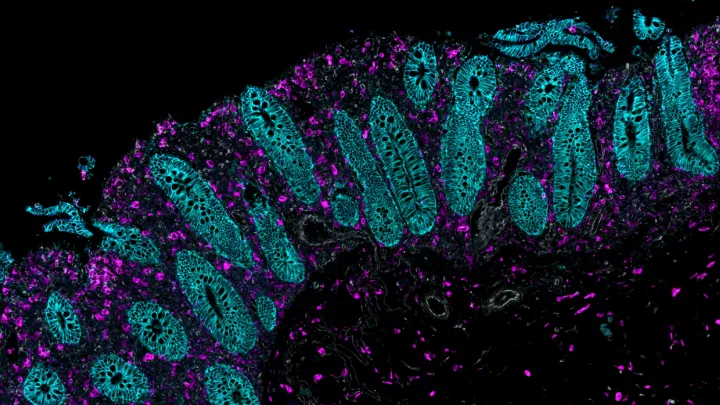Caring for Your Child's G-Tube
Tips for Gastrostomy Tube (G-tube) Care
Why is a G-tube necessary?
G-tubes serve as a nutritional support for children with:
- A functioning gut who cannot take in enough calories
- Neuromuscular disorders
- Cardiac diseases
- Severe gastroesophageal reflux, which is present in some developmentally delayed kids
- Metabolic syndromes
- Severe food allergies
- Cystic fibrosis
- Poor growth or malnutrition
- Anatomic issues like atresia
Basic Requirements for Daily Care of Your Child's G-tube
- Wash your hands before touching the G-tube or G-tube site.
- Clean the sitetwo times daily during the post-operation period. This is two to three weeks until the G-tube site
is healed. - Clean the site one time daily after the post-operation period
Steps for Cleaning the G-tube at Home
- Dip a corner of a washcloth into warm clean water.
- Add some mild unscented bath soap to the corner of the washcloth.
- Gently wipe around the G-tube hole using the wet and soapy corner of the washcloth.
- Dip a new and dry corner of the washcloth into clean warm water (do not add soap).
- Wipe around the G-tube hole to rinse off the soap.
- Dry the G-tube area with a clean washcloth.
Troubleshooting Your Child's G-tube
It can be common for your child's G-tube to come out, get clogged or leak. It's important to know what to do when these issues occur to avoid infection and help prevent your child from becoming ill. You can find troubleshooting tips for your child's G-tube here.
Possible Causes of Your Child's Nausea, Cramping, Distention and Diarrhea
- The feeding is going into the G-tube too fast.
- The formula may be too cold (it should be at room temperature).
- The formula may be spoiled. Check the expiration date and change feeding bag as instructed. Store open formula in the refrigerator for up to 24 hours.
- The G-tube has slipped into the stomach too far. (Check your child's G-tube measurement on a daily basis.)
- Your child may be lying flat during feeds. (Have him or her sit up or elevate their head on a pillow.)
- Your child could be constipated. (Please contact their G-tube specialist.)
What Are the Most Common Issues When Caring for Your Child's G-tube?
- Granulation tissue formation
- Skin infections and leaking tubes
- Tube dislodgement
Granulation Tissue Formation
Granulation tissue is an overgrowth of capillaries and looks red, raw and “beefy.” It may cause pain as the skin breaks down around the site. This is a very common problem with G-tubes. Some treatments are painful, especially with the use of silver nitrate. Treating granulation tissue formation should only occur if the skin is bleeding or causing distortion of the tract leading to heavy leakage of formula and fluid from the stomach.
Skin Infections and Leaking Tubes
A skin infection may be difficult to diagnose because often there is redness caused by the G-tube rubbing on the skin as well as a clear yellow discharge. The redness on the skin and clear yellow discharge is normal, and does not, by itself, indicate infection. Additionally, gastric contents may leak and cause redness; this is a chemical reaction, not bacteria. Infection, on the other hand, will normally have some of the following symptoms: spreading redness, increased tenderness or pain, areas of raised red skin, fever, development of a lump or discharge of pus. If you child has a leaking tube, check placement and measurement. If your child has a balloon type device, check that the balloon is inflated with the correct amount of fluid. Inform your healthcare practitioner.
G-tube Dislodgement
In the case of a G-tube coming out, first of all, don’t panic! Your health care practitioner will have advised you before you went home to either cover the opening with gauze and tape to protect the site, or to insert a tube into the g tube site. If your practitioner wants you to insert a tube, you will have been taught how and given a replacement tube. Your practitioner will also have advised you to proceed to the emergency department or clinic. Ask your practitioner what you should do in the event the tube becomes dislodged.
Update Feb. 2018
ENFit is Here!
What is the ENFit Connector System? The ENFIT connector system is a new international safety initiative to prevent tubing misconnections. A tubing misconnection is when a connection is made between devices that were not intended to connect, unintentionally delivering medication, oxygen or fluid to the wrong place.

The new ENFit system will replace all other enteral devices. Please talk to your doctor or care manager about the new ENFit system.
This G-tube guide was created when Gloria Verret, an RN Remedies nurse blogger at Children's Hospital Los Angeles, discovered parents of G-tube children were in need of information in a language they could understand and share with other G-tube parents. Gloria collaborated with nurse experts in the Division of Pediatric Surgery and wound ostonomy. Thank you to Tere Jones, RN, CPN, RNIII for her collaboration on this guide.


